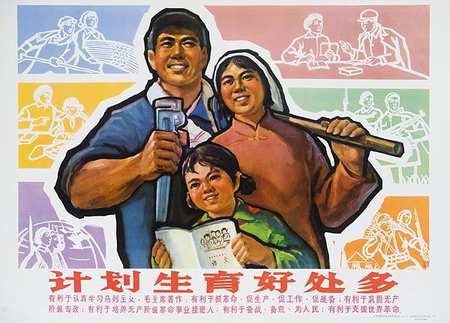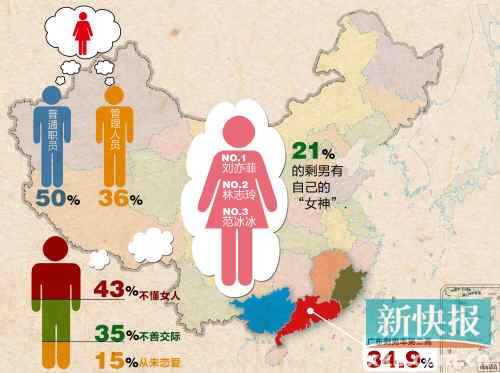by Brian Hioe
語言:
English
Photo Credit: chineseposters.net
Does the End of “One Child Policy” Mean Anything? Or Is it Really the Shift to “Two Child Policy”?
IT MAY BE funny to note that, while the world largely reported on the end of “one child policy” as a momentous shift for China in the past month, the policy change of the CCP we see at present might be better described as a shift from “one child policy” to “two child policy.” It is not that restrictions on the number of children which are legally allowed by the Chinese government has been lifted. Now it is that couples are allowed to have two children.
And it is not even that the end of “one child policy” means all that much in reality. Somehow, much of the world is unaware of the fact that families with multiple children in China are far from uncommon, the enforcement of one child policy having varied from region to region and there having been numerous loopholes around one child policy. These included paying fines in order to have more than one children and cases in which families were allowed to have children until they could produce a male heir to carry on the family name. Actually, it is that with the end of one child policy, the Chinese government loses a major source of income, now that fines for having more than one child no longer have to paid!
 Propaganda poster featuring a proletarian family with one child
Propaganda poster featuring a proletarian family with one child
In a century in which China embarked on massive national transformational projects including the Great Leap Forward and the Cultural Revolution, the end of one child policy would seem to mark the backing away of the CCP from these grand projects of social engineering aimed at accomplishing social transformation through the dictates of central policy. The apparent uniqueness of China would seem to lie in that it is able to carry out social engineering projects because of the centralized power of the CCP which allows for the extension of government power in a wide sweeping manner that no other state in the world would be capable of. But the end of one child policy would seem to represent that the CCP is backing away from this past. Or does it?
Actually, no. Again, as the supposed end of “one child policy” might be better understood as a shift to “two child policy” in this sense it does not represent any backing away from grand transformational projects. And Chinese government still claims that where it differs from western capitalism is on the basis of its ability to carry out grand social engineering projects. The recent economic slowdown, for example, is claimed to be deliberate in nature, a sign that politics dominates economics rather than economics dominating politics, as in western capitalism. Likewise, “two child policy” is still as wide-reaching a social policy in the same vein.
China’s Phenomenon of “Leftover Women”, Aging Population and Declining Birthrates in East Asian Capitalist Nations
HOWEVER, WHAT we might note instead is the slide of China into sociological phenomena which we see in the countries which have followed the East Asian developmental model. Taiwan, Hong Kong, South Korea, Singapore, and Japan all face issues of a large aging population and a declining birthrate. China would seem to be different from these countries on the basis of that its massive transformational projects in the last century, again, the Great Leap Forward, the Cultural Revolution, and one child policy, have distorted its demographics significantly. The disparity in male/female childbirths which we see at present is, of course, a product of one child policy and the social preference for males in many Asian cultures. Indeed, given that one child policy lasted for thirty five years, even after the lifting of one child policy, it will be that the statistical impact of one child policy will be felt for a long time. Very clearly, the nations which followed the East Asian developmental model did not suffer such cataclysmic events which led to massive demographic disparities as China’s Great Leap Forward, Cultural Revolution, or one child policy.
Nevertheless, is it that the end of one child policy signifies the sliding of China into sociologically resembling the East Asian economic model? It is interesting to note that despite that other East Asian countries did not pass through such crises as China did in the past century, we see a declining birthrate and aging population in Taiwan, South Korea, Hong Kong, Singapore, and Japan. If declining birthrate and aging populations is a sociological tendency of the East Asian developmental model, it may be that the drift of China towards something resembling the East Asian development model in past decades—as compounded by the demographic unevenness which already from past social engineering projects—has only has further aggravated the problem of declining birthrates and rising elderly populations. Indeed, there are those who argue that the successes of the so-called “Chinese model” lay precisely in the social structures which have survived from the Maoist era into the present, but now we see that China is apparently facing social ills which result from the uneven overlap of its Maoist past and capitalist present.
 Gender disparities within China. Photo credit: 新快報
Gender disparities within China. Photo credit: 新快報
Because it is would appear that if one child policy was put into place to control the rate at which the population grew, but now China is struggling against another kind of statistic. That is, the disproportionate balance of male and female children which was a product of one child policy. While there are those who tout greater gender equality for China during the Maoist period, it would that these conservative and patriarchal values about the reproduction of the family have persisted. So, then, do we see the phenomenon of “leftover women” in the present—women unable to find partners in the present because of the gender disparity which exists in China, who are urged by parents to marry as soon as possible, and labelled in public discourse as the unwanted leftovers who seen as a drain on society because of their refusal or inability to settle down and start families.
Although the gender disparity in China is largely a product of one child policy, the end of one child policy will probably not change the situation much where the castigation of so-called “leftover women” is concerned, given that this was a question of social values which led to their social castigation. But broadly we see the phenomenon where individuals who refuse to settle down and start families—particularly women—are castigated in the East Asian countries with aging populations and a declining birthrates. This would seem to a common phenomenon which originates in a cultural emphasis on the family as the site of social reproduction.
If it is a common characteristic of East Asian capitalisms that the patriarchal focus on producing male heirs for the family name has led to demographic unevenness, it is such that this phenomenon has led there to be renewed focus on the heterosexual family and the reproduction of the family through producing children so as to perpetuate the nation. We see this in Taiwan, Hong Kong, Singapore, South Korea, and Japan alike.
Now we see this quite clearly in China, too, perhaps a further mark of how China is going the way of the East Asian development model. Recent economic crashes have summoned up the specter of past economic bubbles in East Asian countries which eventually bursted. Now, we also see sociological phenomena such as declining birthrate, aging population, and the attempt to push for a renewed emphasis on the family by social conservatives which we see in other East Asian capitalisms. In this sense, the time of thinking China as separate from East Asian capitalism may be long past. And what we might note about China’s demographic trends that have led up to the end of one child policy is yet another case in point.


 Propaganda poster featuring a proletarian family with one child
Propaganda poster featuring a proletarian family with one child Gender disparities within China. Photo credit: 新快報
Gender disparities within China. Photo credit: 新快報